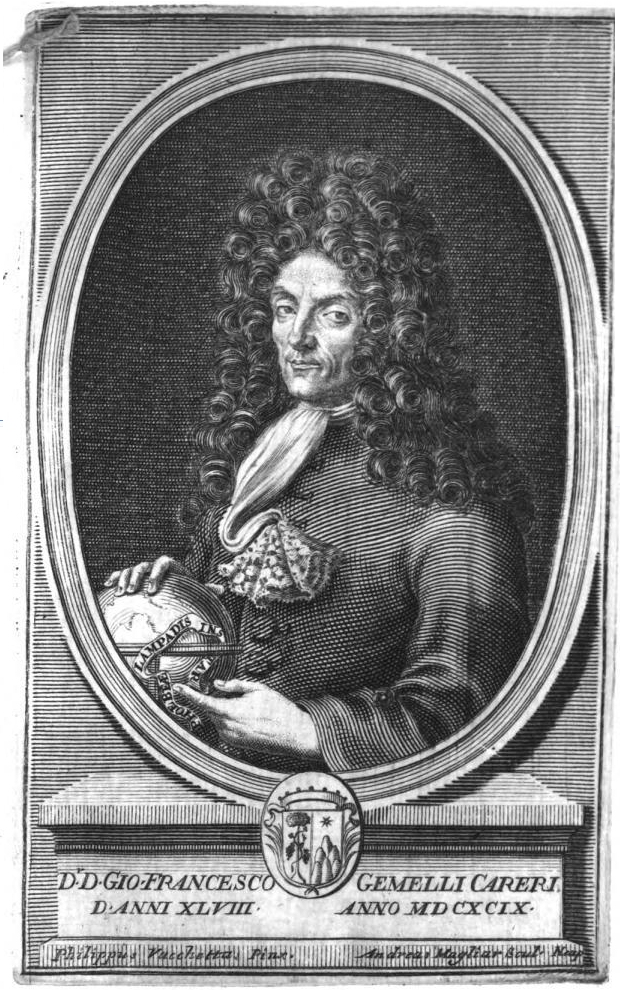
Gemelli Careri Francesco (w1969)
- Alias-Pseudonimo-Pseudonyme: -
- Nationality-Nazionalità-Nationalité: Italy, Italia, Italie
- Birth/death-Nascita/morte-Naissance/mort: 1651-1725
- Means of transport-Mezzo di trasporto-Moyen de transport: Various, Diversi, Différents
- Geographical description-Riferimento geografico-Référence géographique: Around the World, Giro del mondo, Tour du monde
- Internet: Visit Website
- Wikidata: Visit Website
- Additional references-Riferimenti complementari-Références complémentaires: Gemelli Careri F., Giro del mondo, Napoli, 1699.
Hits: 12150
